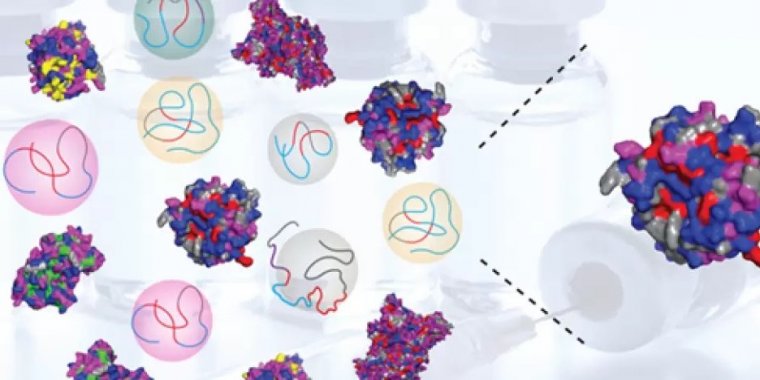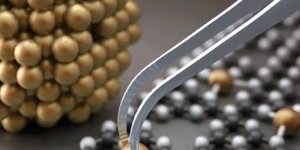| News / Science News |
Can synthetic polymers replace the body's natural proteins?
Most life on Earth is based on polymers of 20 amino acids that have evolved into hundreds of thousands of different, specialized proteins. They catalyze reactions, form backbone and muscle, and generate movement.

Polymer scientists are creating artificial fluids that mimic many of the properties of natural proteins. Photo: Zhiyuan Ruan, Ting Xu lab, UC Berkeley
But is all that variety necessary? Could biology work just as well with fewer building blocks and simpler polymers?
Ting Xu, a University of California, Berkeleypolymer scientist, thinks so. She has developed a way to mimic specific functions of natural proteins using two, four or six different building blocks — ones currently used in plastics — and found that these alternative polymers work as well as real protein and are a lot easier to synthesize than trying to replicate nature's design.
As a proof of concept, she used her design method, which is based on machine learning or artificial intelligence, to synthesize polymers that mimic blood plasma.
The artificial biological fluid kept natural protein biomarkers intact without refrigeration and even made the natural proteins more resistant to high temperatures — an improvement over real blood plasma.
The protein substitutes could be a game-changer in biomedical applications, since it takes a lot of effort to tweak natural proteins to do things they were not originally designed to do, or try to recreate the 3D structure of natural proteins.
Instead, AI could pick the right number, type and arrangement of plastic building blocks — similar to those used in dental fillings, for example — to mimic the desired function of a protein, and polymer chemistry could be used to make it.
In the case of blood plasma, for example, the artificial polymers were designed to dissolve and stabilize natural protein biomarkers in the blood. Xu and her team also created a mix of synthetic polymers to replace the liquid inside a cell, the so-called cytosol.
In a test tube filled with artificial biological fluid, the cell's nanomachines, the ribosomes, continued to pump out natural.
The design framework also opens the door to designing hybrid biological systems, where plastic polymers interact smoothly with natural proteins to improve a system, such as photosynthesis. The polymers could be made to degrade naturally, making the system recyclable and sustainable.
Xu's goal is to rethink how biomaterials are currently designed.
"We are not letting biology tell us how the material should be designed. We are looking at individual pathways, individual factors, and not looking at it holistically." (U.S. National Science Foundation)
YOU MAY ALSO LIKE





